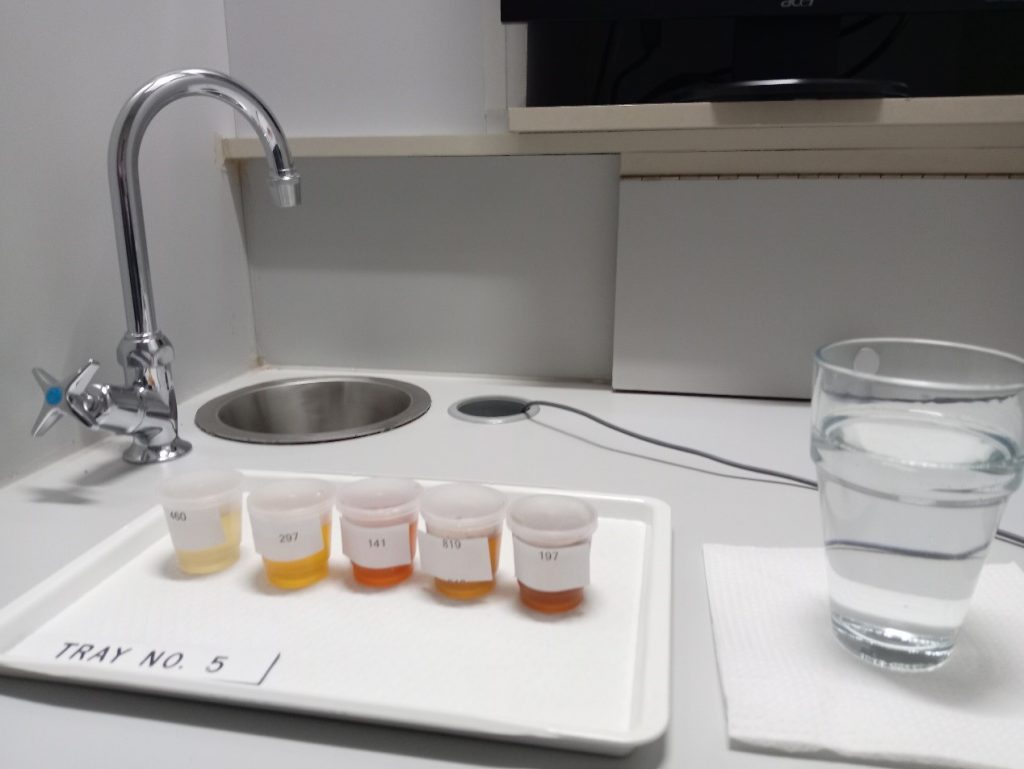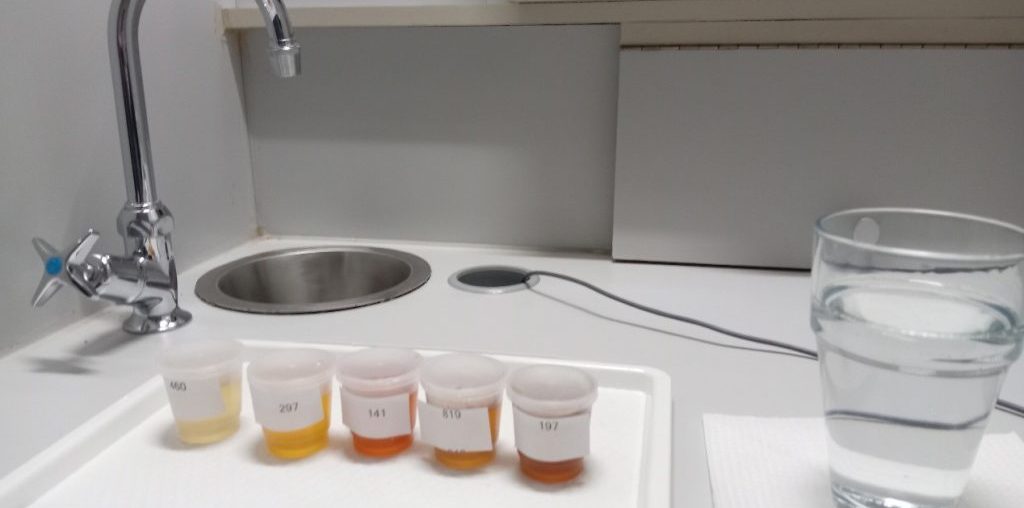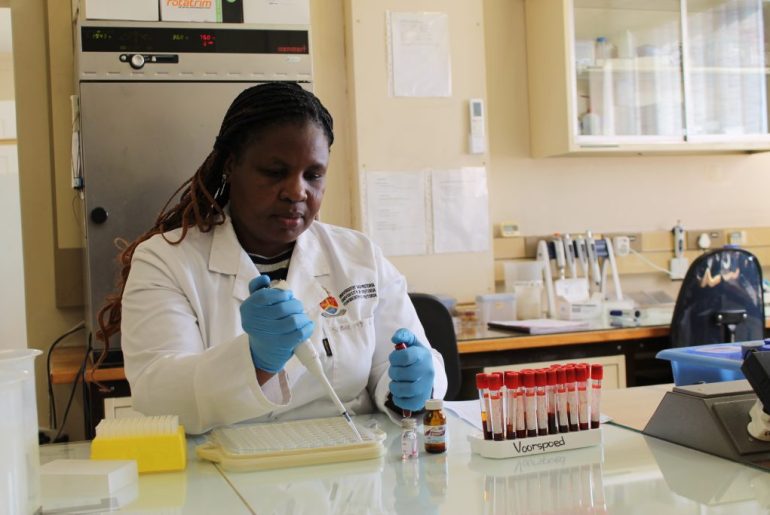
Above: Tea samples set out for participants to analyse
For many of us when we take the first bite of our food or first sips of a beverage, we hardly analyse all the ingredients that mix and merge to give us our favourite satisfying flavours. However, panellists at the sensory lab at the University of Pretoria are expected to have a slightly more expressive palette.
The sensory lab at the university focuses on research which involves how humans perceive and respond to different sensory properties of food through taste, smell, sight, touch and hearing. Through the world-class facilities located at the university, members of the public can evaluate products and give personal feedback.
“Our senses play a factor into what we eat and that influences what we buy and continue to buy,” said Prof Riëtte de Kock from the Department of Consumer and Food Sciences at UP. Prof de Kock explained that food samples are prepared for evaluation by two types of panels:
- Trained panellists, who train people to describe and evaluate what they are sensing.
- Consumers, where ordinary people give their opinion about what they like and dislike. Consumer panels involve groups of around 80 subjects.
Participants are taken to the testing lab where the built-in software asks specific questions and issues instructions for sensory testing. Prof de Kock explained “the software records the data as it comes through. We have 30 trained panellists and they come in about twice a week for 2 hours. And of course, we pay them.” They currently have a hair project that has been running for 2 years. Participants test hair products and record their results, “we recruit people, evaluate their hair and train them. They can then take samples home, use the software and test the products on their hair. The participants get prompts of when to evaluate their progress and input results,” Prof de Kock said.
The process of recruiting participants to test food and beverage is thorough, in that it includes restrictions such as not eating, drinking, smoking/vaping or teeth brushing before they participate as these can affect one’s palette. “There is a consent form to complete that identifies ingredients and this protects participants from allergic reactions and takes cultural and religious customs into account.,” Prof de Kock explained.
Daddy Kgonothi, who is pursuing his PhD in Food Science said the work he has done with the sensory lab for four years has given him a different perspective; one of the consumer. “ I now analyse everything I consume. When I drink something I try to figure out what I am tasting and sensing throughout the product.”
Prof de Kock revealed that they are currently in the process of getting a panel to evaluate bread. They do this by screening participants and testing all the senses. Screening is an hour-long process where participants identify aroma, flavour and have to describe products accurately as well as distinguish small differences. It is crucial that the participants selected are reliable. “It is a job,” she concluded.




